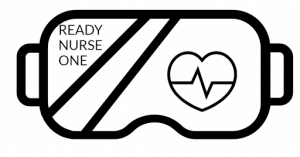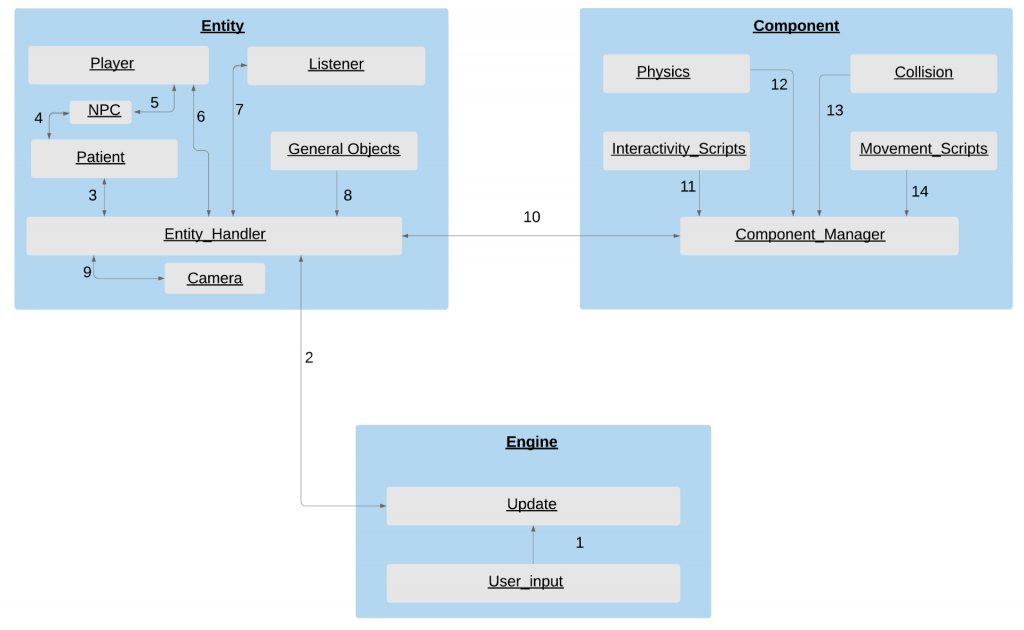Team Name
Ready Nurse One
Timeline
Fall 2019 – Spring 2020
Students
- Brianna Peterson
- Nick Moseley
- Zachery Gentry
- Daniel Ramirez
- Emmanuel Gonzalez
Sponsor
RaeAnna Jeffers, Nursing Department
Abstract
At the highest level, our vision is to build a VR Center dedicated to the inception, design, and implementation of VR in all disciplines across campus. The purpose is to enhance interdisciplinary education. The focus of this Nursing VR Simulation is to teach empathy and compassion in addition to technical skills in palliative care. There are a lack of affordable VR solutions that teach these aspects of nursing. A completed VR project would allow the sponsors to teach empathy in a life-like atmosphere which is not achievable in any other typical medium. This specific project is beneficial because the student nurse will be debriefed at each stage and is allowed to process the experience in the hopes that in real life, they will be fortified to handle this type of crisis.
Background
The Nursing department at UTA noticed the lack of affordable medical related tools that take advantage
of current advances in technology, particularly in the field of nursing and palliative care where practice
scenarios cannot be easily recreated for training. This lead to their use of vSim, a tool that proved to be
incompetent in simulating palliative care as much as they had hoped. In trying to find a better solution,
they envisioned an entire VR center on campus. Given the notoriety of both departments at UTA, the
Nursing department sought the help of the Computer Science and Engineering department to create
this Nursing VR Simulation . This should lead to an increase in the overall realism compared to their
current VR simulation solution. The Nursing department anticipated the need for multiple teams to
work on this project each given a different scenario in the care of a single patient. There have been two
teams prior and each have worked in tandem with the UTA Nursing department and the other teams.
Project Requirements
-
The Glasgow Coma Scale will be utilized periodically throughout the simulation to assess the consciousness of the patient.
-
The user shall administer medication to the patient. The user will be given multiple options for dosage of medication as well as administration method. All medication shall already be within the house, specifically within a lock box on the patient’s nightstand.
-
The user shall check the patient’s vital signs. The user shall document any changes in vital signs on the patient’s chart.
- The patient will display changes in skin color as their condition worsens.
- The user shall have access to a medical chart that lists detailed information about the patient. This medical chart will be accessible from a tablet or computer. The chart data will be retrieved from the previous scenario.
- The VR simulation will provide a report of the user’s choices throughout the scenario. This report will be shown on a final summary screen, and will be emailed to the user upon the user entering an email.
- The user shall communicate with the patient’s wife periodically throughout the scenario. The user should keep the patient’s wife updated on the patient’s status through a series of multiple-choice responses.
- The simulation will maintain an average of 50 frames per second and a minimum of 40 frames per second when running on the sponsor’s computer.
System Overview
Our application will use the Entity-Component-System (ECS) software design pattern as Unity natively supports ECS. This will not be pure ECS, but will be inspired by the pure ECS design. This will make programming the application easier when using Unity. The ECS design pattern provides other benefits; by separating the overall application into entities, components, and the system, it increases modularity and loosens coupling. In our application, the system layer will be called the Engine layer in order to avoid confusion.
Results
Coming Soon.
Future Work
Coming Soon.
Project Files
System Requirements Specification (link)
Architectural Design Specification (link)
Detailed Design Specification (link) – Coming Soon
Poster (link) – Coming Soon
References
N/A

